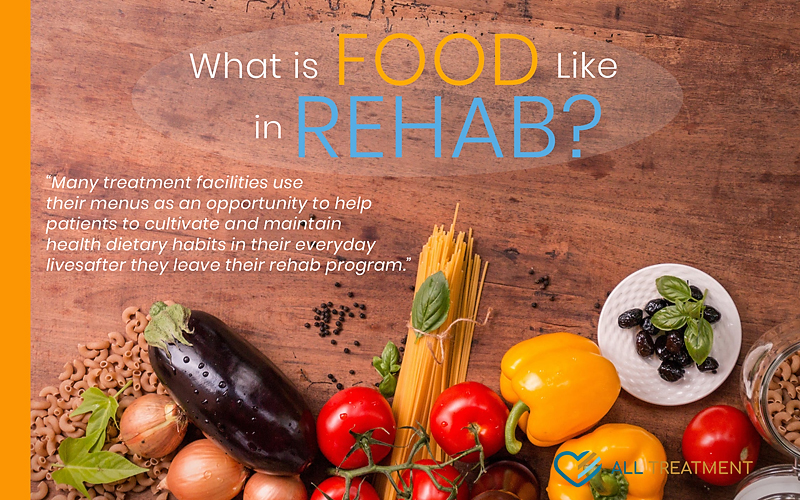What Is Food Like In Addiction Rehab?

August 17th, 2018
One of the most commonly asked questions when patients are considering residential treatment for drug and alcohol addiction is “What’s the food like ?” Despite the considerable emotional and physical trauma one sustains during prolonged and untreated substance use, food can provide a sense of comfort, normalcy, and stability even in the deepest throes of addiction. When people enter treatment they are perhaps the most vulnerable they’ve ever been in their entire lives and so are craving compassion, comfort, and help. While it may seem like a small thing, the food available in rehab can provide the familiarity and satisfaction a person needs to stay motivated each day during treatment. Facilities also must consider the possibility of co-occurring eating disorder, which affects approximately eight million people.
Food in Residential Treatment Programs
Patients who undergo inpatient or residential treatment for drug and alcohol addiction stay in facilities in which daily meals are provided. As the relationship between poor diet and addiction has become more and more apparent over the past few decades, treatment facilities have placed a higher and higher emphasis on quality meal preparation. Many higher-end facilities offer classically trained or gourmet chefs on premises, while other contract with reputable and established food vendors to feed their patient community on a daily basis. While the quality of food will vary based upon each treatment facility’s resources, more steps have been taken improve quality, flavor, and freshness to give patients the best possible experience during their stay.
A Focus on Quality and Nutrition
In addition to focusing on flavor and freshness, many inpatient treatment facilities work with nutritional counselors to develop menus that have foods that will aid patients in their everyday recovery, including foods that are rich in antioxidants, increase energy levels, are heart healthy, and more. Most treatment facilities cater to a wide variety of dietary needs, including patients who:
- Is lactose intolerant?
- Have gluten allergies.
- Are vegan or vegetarian.
Many treatment facilities use their menus as an opportunity to help patients to cultivate and maintain health dietary habits in their everyday lives after they leave their rehab program. A variety of foods help patients more effectively maintain their recovery by regulating their digestive function, stabilizing their blood sugar, boosting their immunity, and more. Maintaining a healthy diet can also help patients manage the long-term health issues associated with addiction which, according to the National Institute on Drug Abuse NIDA), which can include:
- Heart disease.
- High blood pressure.
- Diabetes.
- HIV/hepatitis C.
- Obesity, and more.
Effective long-term management of these symptoms requires regular follow-up visits with your physician. The exact treatment protocol will vary based on each patient’s ongoing care needs. The right food can also help offset the severity of patients’ lingering withdrawal symptoms, such as intestinal distress, headache, and even chronic pain and inflammation. Post-recovery diets should focus on consistent hydration, balanced meals, and diminishing potentially addictive substances like sugar, which can be just as addictive as many illicit drugs.
Part of an Overall Treatment Experience
While food is by no means the most important criteria for assessing the quality of an inpatient treatment program, it can still provide patients the comfort and fulfillment they need to stay motivated toward their treatment and subsequent recovery. Most inpatient facilities will discuss the quality of their cuisine in their marketing material. Any additional questions about dietary restrictions and any other priorities can be answered by your prospective facility’s admissions team. Most inpatient treatment centers have recognized the critical role that food and environment play in patients’ overall treatment experience and are taking measures to maximize quality.
Resources:
- anred.com – How Many People Have Eating Disorders?
- ncbi.nlm.nih.gov – Food, eating, and weight concerns of men in recovery from substance addiction
- webmd.com – The Truth About Sugar Addiction
- health.usnews.com – What’s the Best Diet for Newly Sober Alcoholics and Addicts?
- drugabuse.gov – https://www.drugabuse.gov/related-topics/health-consequences-drug-misuse

